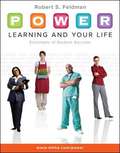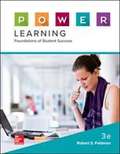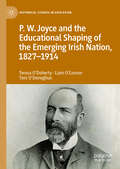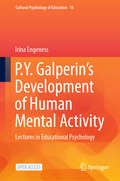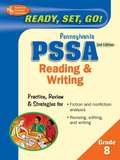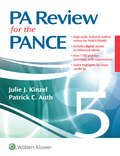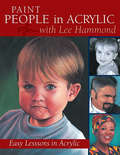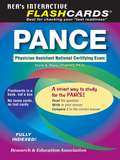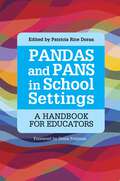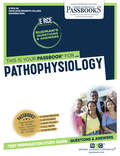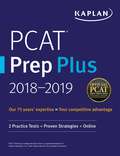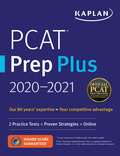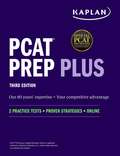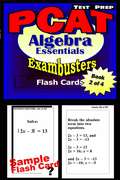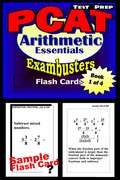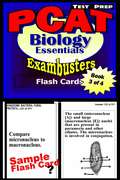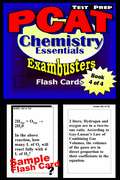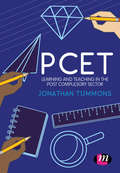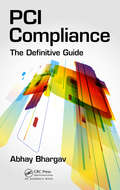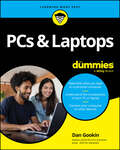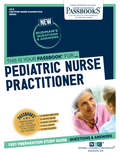- Table View
- List View
P. O. W. E. R. Learning and Your Life: Essentials of Student Success
by Robert FeldmanP. O. W. E. R. Learning and Your Life is the only first-year experience text created specifically for the non-residential, commuter student and campus. These students face unique challenges and as they typically work full- or part-time, juggle work and family obligations with school, and they may be the first person in their families attempting a post-secondary education. The focus of P. O. W. E. R. Learning and Your Life is on real application of P. O. W. E. R. strategies in a program-specific approach through the use of photos, examples, and activities tied to general education courses (such as math, English, etc. ) and careers through the use of P. O. W. E. R. principles.
P. O. W. E. R. Learning: Foundations of Student Success
by Robert S. FeldmanP.O.W.E.R. Learning is the only research-based student success series with a unifying system for critical thinking and problem solving. P.O.W.E.R. Learning: Foundations of Student Success utilizes this P.O.W.E.R. framework to maximize students' potential for success in college and life addressing the diverse, 2-year student population by providing direct, practical solutions to the challenges that students face as they navigate college and prepare for their careers. Using the scientifically-based, yet simple and class-tested principles of the P.O.W.E.R. (Prepare, Organize, Work, Evaluate, and Rethink) system, students gain a sense of mastery and achievement as they move through the text; with the growth of their confidence comes the increased intellectual enthusiasm and personal discipline needed for them to excel.
P.W. Joyce and the Educational Shaping of the Emerging Irish Nation, 1827-1914 (Historical Studies in Education)
by Tom O'Donoghue Teresa O'Doherty Liam O’ConnorThis book provides an exposition on the professional and cultural life of Patrick Weston Joyce (1827–1914), more popularly known as P. W. Joyce, who lived and worked during the final phase of British rule in Ireland. The focus throughout is very much on how family, locale, and schooling influenced this significant Irish patriot, polymath, and pioneering pedagogue who worked across a range of disciplines, including education, language, history, and music. Moreover, attention is paid to how his achievements were possible only because of the variety of leading roles he played in the development of the Irish National School System between 1845 and 1893. Thus positioned, Joyce was in many ways a significant choreographer of a slow revolution in which education, in both formal and informal settings, was used to educate the Irish people regarding their cultural heritage.
P.Y. Galperin's Development of Human Mental Activity: Lectures in Educational Psychology (Cultural Psychology of Education #14)
by Irina EngenessThis open access book introduces the legacy of Piotr Galperin to a wider audience of researchers, educators and psychologists. Previous translations of Galperin’s work present only some aspects of his conceptual thinking; however, his main contribution to the general, genetic and pedagogical psychology as a unique holistic and systemic approach to studying of psychological phenomena and processes, mechanisms of their formation and development, is still quite unknown in most parts of the world.The eight lectures chosen for the book have been translated from Russian for the first time, and they belong to the Study of the Formation of Human Mental Activity from Galperin’s collection of the Lectures in Psychology (Galperin, 2002). These eight lectures present the central ideas of Galperin’s pedagogical theory, and they conceptualise learning to learn approach and argue how teaching and learning process can enhance the development of higher mental functions with learners and therefore enhance the development of students as learners. These ideas may be of primary importance to educational practitioners and researchers interested in developmental learning and teaching approach given the current concerns of educational practice that schools struggle to prepare students for their adult and the need to develop the capacity in lifelong learning with students in the 21st century.
PA PSSA 8th Grade Reading & Writing 2nd Ed. (Pennsylvania Pssa Test Preparation Ser.)
by The Editors of REA Dana PassanantiPractice with REA and Pass the PSSA! REA's second edition of our Ready, Set, Go!® Reading & Writing test prep for the Pennsylvania System of School Assessment (PSSA) exam gets Pennsylvania students ready for this crucial high-stakes test. Specifically designed to boost essential reading and writing skills, this test prep provides all the instruction and practice eighth grade students need to excel on this important exam. Written in an easy-to-follow, student-friendly style, it's perfect for classroom, family, or individual study. Fully aligned with the Assessment Anchors adopted by the Pennsylvania Department of Education, the review chapters cover every topic tested on the exam, including: word recognition, inferences and conclusions, main ideas, literary analysis, and writing and revising essays. Numerous drills and review lessons throughout the book enhance student vocabulary and literary analysis skills. Key tutorials reinforce writing skills and increase the reading comprehension abilities needed to succeed on the test. Color icons highlight the key concepts, questions, and activities in each chapter. A diagnostic Pretest pinpoints student strengths and weaknesses, and a full-length Posttest allows students to measure their progress and focus on areas in need of further study. Our confidence-building test tips help reduce test anxiety and boost test-day readiness for this important high-stakes exam. Whether used in a classroom, for home or self study, or with a tutor, this test prep gets Pennsylvania students ready for their important high-stakes exam, set to take on new challenges, and helps them go forward in their studies!
PA Review for the PANCE
by Julie Kinzel Patrick AuthPrepare for the PANCE exam with this updated and revised resource and NEW digital enhancements! PA Review for the PANCE prepares students for certification (PANCE) and recertification (PANRE) examination. This edition contains concise, streamlined content with practice questions and tables, figures, charts, and graphs that summarize information for efficient study. *Also included with the Fifth Edition – online access to a NEW enhanced eBook, offering digital resources that will strengthen and reinforce your PANCE and PANRE knowledge.
PAINT PEOPLE in ACRYLIC with Lee Hammond
by Lee HammondWith over 20 step-by-step projects, best-selling author Lee Hammond walks you step-by-step through painting realistic and detailed life-like people.
PANCE (Pance Test Preparation Ser.)
by Doris RappREA's Interactive Flashcard® Book for the PANCE (Physician Assistant National Certifying Exam) Hundreds of Must-Study Questions and Answers Written by a Physician Assistant Instructor! REA's Interactive Flashcard® Book for the PANCE (Physician Assistant National Certifying Exam) helps medical students check their test-readiness before taking this crucial exam. Written by a Physician Assistant Instructor, these flashcards give medical students the practice they need, while boosting their knowledge and self-confidence. This recommended study aid contains 400 must-study questions and answers that cover all 12 official categories tested on the PANCE, including: Cardiovascular, Pulmonary, and Endocrine systems; EENT (Eyes, Ears, Nose and Throat), Gastrointestinal/Nutritional; Genitourinary, Musculoskeletal, Reproductive, and Neurological Systems, Psychiatry/Behavioral; Dermatologic; Hematologic, and Infectious Disease. Unlike most flashcards that come loose in a box, our flashcards are bound in an organized, portable book that makes studying a breeze. Students can write their answer on the front of the card, and then compare it to the answer on the back of the card. This concise question and answer format makes it easy to find the right answer, and we even give details explaining why the answer is correct. Fully indexed for smarter study, this book is an indispensable asset for anyone preparing for a career as a Physician Assistant!
PANDAS and PANS in School Settings: A Handbook for Educators
by Darlene Fewster Patricia Rice Doran Janice Tona Kandace M. Hoppin Amy Mazur Diana Pohlman Kathleen Stein Margo ThienemannPANDAS (Pediatric Autoimmune Neuropsychiatric Disorders Associated with Strep) and PANS (Pediatric Acute-Onset Neuropsychiatric Syndrome) occur when an abnormal immune response produces brain inflammation, leading to unusual psychological symptoms in children. Symptoms can include OCD, tics, ADHD, anxiety disorders, sensory issues and marked personality changes. This practical handbook explains how educators can distinguish between these symptoms and pre-existing conditions, and offers strategies for supporting students with PANDAS and PANS in school settings. Contributions from experts provide educators with the understanding needed to be able to collaboratively identify PANDAS and PANS, and carry out effective interventions. As the rate of incidence of PANDAS and PANS increases, this book will be an essential resource for school staff in getting to grips with these complex disorders and overcoming the challenges they present.
PATHOPHYSIOLOGY: Passbooks Study Guide (Excelsior/Regents College Examination Series #Pep-60)
by National Learning CorporationThe Excelsior/Regents College Examinations (E/RCE) offer you an opportunity to obtain recognition for college-level learning and consists of exams designed to demonstrate achievement and mastery of various college-level subjects, such as the Arts and Sciences, Business, Criminal Justice, Education, Health and Nursing. The E/RCE Pathophysiology Passbook® prepares you by sharpening knowledge of the skills and concepts necessary to succeed on the upcoming exam and the college courses that follow. It provides a series of informational texts as well as hundreds of questions and answers in the areas that will likely be covered on your upcoming exam.
PBL Starter Kit (Project Based Learning Toolkit Series)
by Buck Institute for EducationA practical guide to Project Based Learning. Designed for middle and high school teachers, the PBL Starter Kit contains down-to-earth, classroom tested advice, including six sample projects, step-by-step guidance, tips from experienced practitioners, planning tools and online resources plus project-ready rubrics and handouts.
PC-5 Master Guide To FRSR
by Muthuswamy BrindaThis book is a supplement to the authors’ Made Easy series on Pension and FR & SR and is mainly meant for examination candidates. Theoretical questions and answers contained in those four books have been removed and brought out separately in this guidebook.
PCAT Prep Plus 2018-2019: 2 Practice Tests + Proven Strategies + Online (Kaplan Test Prep)
by Kaplan Test PrepKaplan's PCAT Prep Plus 2018–2019 includes all the content and strategies you need to get the PCAT results you want. Kaplan Test Prep is the only Official Provider of PCAT Prep, as endorsed by the American Association of Colleges of Pharmacy (AACP).The Best Review2 full-length, realistic practice tests online that provide you with scores and percentilesA guide to the current PCAT Blueprint to show you exactly what to expect on Test DayAdditional practice questions for every subject, all with detailed answers and explanationsComprehensive review of all the content covered on the PCAT:WritingBiologyGeneral ChemistryOrganic ChemistryBiochemistryCritical ReadingQuantitative ReasoningKaplan's proven strategies for Test Day successExpert GuidanceKaplan's expert psychometricians ensure our practice questions and study materials are true to the test.We invented test prep—Kaplan (www.kaptest.com) has been helping students for almost 80 years. Our proven strategies have helped legions of students achieve their dreams.
PCAT Prep Plus 2020-2021: 2 Practice Tests + Proven Strategies + Online (Kaplan Test Prep)
by Kaplan Test PrepKaplan's PCAT Prep Plus 2020-2021 includes all the content and strategies you need to get the PCAT results you want. Kaplan Test Prep is the only Official Provider of PCAT Prep, as endorsed by the American Association of Colleges of Pharmacy (AACP).PCAT announced minor changes to the exam for the July 2018 test dates going forward – the timing of three of the sections has increased, giving you more time per question, a greater emphasis on passage-based questions in the science sections, more real-life problems in the Quantitative Reasoning section, and non-science based passages in Reading Comprehension. We have already updated the timing on the included Full-Length practice tests with PCAT Prep Plus to match the test as well as aligned the science sections with the increase in passage-based questions. Rest assured that the changes still align with the effective prep you'll get from Kaplan's PCAT Prep Plus as the core skills and content tested has not changed. To see the new timing of the exam visit kaptest.com/study/pcat/all-about-the-pcat/The Best Review2 full-length, realistic practice tests online that provide you with scores and percentilesA guide to the current PCAT Blueprint to show you exactly what to expect on Test DayAdditional practice questions for every subject, all with detailed answers and explanationsComprehensive review of all the content covered on the PCATKaplan's proven strategies for Test Day successExpert GuidanceKaplan's experts ensure our practice questions and study materials are true to the test.We invented test prep—Kaplan (www.kaptest.com) has been helping students for 80 years. Our proven strategies have helped legions of students achieve their dreams.
PCAT Prep Plus: 2 Practice Tests + Proven Strategies + Online (Kaplan Test Prep)
by Kaplan Test PrepKaplan's PCAT Prep Plus, Third Edition is up-to-date with the latest test changes and includes all the content and strategies you need to get the PCAT results you want. Kaplan Test Prep is the only Official Provider of PCAT Prep, as endorsed by the American Association of Colleges of Pharmacy (AACP). We are so certain that PCAT Prep Plus offers all the knowledge you need to excel at the PCAT that we guarantee it: After studying with the online resources and book, you'll score higher on the PCAT—or you'll get your money back.The Best Review2 full-length, realistic practice tests online that provide you with scores and percentilesA guide to the current PCAT Blueprint to show you exactly what to expect on Test DayAdditional practice questions for every subject, all with detailed answers and explanationsComprehensive review of all the content covered on the PCATKaplan's proven strategies for Test Day successExpert GuidanceKaplan's experts ensure our practice questions and study materials are true to the test.We invented test prep—Kaplan (kaptest.com) has been helping students for 80 years. Our proven strategies have helped legions of students achieve their dreams.
PCAT Test Prep Flash Cards: Algebra Essentials (Exambusters PCAT Workbook #2 of 4)
by Ace Inc.<P><P><i>Advisory: Bookshare has learned that this book offers only partial accessibility. We have kept it in the collection because it is useful for some of our members. Benetech is actively working on projects to improve accessibility issues such as these.</i><P><P> 450 questions and answers that highlight introductory algebra definitions, problems, and concepts.<P><P> Topics: Algebraic Concepts, Sets, Variables, Exponents, Properties of Numbers, Simple Equations, Signed Numbers, Monomials, Polynomials, Additive and Multiplicative Inverse, Word Problems, Prime Numbers, Factoring, Algebraic Fractions, Ratio and Proportion, Variation, Radicals, Quadratic Equations <P>Exambusters PCAT Prep Workbooks provide comprehensive, fundamental PCAT review--one fact at a time--to prepare students to take practice PCAT tests. Each PCAT study guide focuses on one specific subject area covered on the PCAT exams. From 300 to 600 questions and answers, each volume in the PCAT series is a quick and easy, focused read. Reviewing PCAT flash cards is the first step toward more confident PCAT preparation and ultimately, higher PCAT exam scores!
PCAT Test Prep Flash Cards: Arithmetic Essentials (Exambusters PCAT Workbook #1 of 4)
by Ace Inc.<P><P><i>Advisory: Bookshare has learned that this book offers only partial accessibility. We have kept it in the collection because it is useful for some of our members. Benetech is actively working on projects to improve accessibility issues such as these.</i><P><P> 600 questions and answers highlight essential arithmetic definitions, problems, and concepts. <P><P>Topics: Addition, Subtraction, Multiplication, and Division of Whole Numbers; Fractions and Decimals, Multiplication Tables, Word Problems, Percents, Measurement, Metric System, Square Roots and Powers, Real Numbers, Properties of Numbers<P>Exambusters PCAT Prep Workbooks provide comprehensive, fundamental PCAT review--one fact at a time--to prepare students to take practice PCAT tests. Each PCAT study guide focuses on one specific subject area covered on the PCAT exams. From 300 to 600 questions and answers, each volume in the PCAT series is a quick and easy, focused read. Reviewing PCAT flash cards is the first step toward more confident PCAT preparation and ultimately, higher PCAT exam scores!
PCAT Test Prep Flash Cards: Biology Essentials (Exambusters PCAT Workbook #3)
by Ace Inc.<P><P><i>Advisory: Bookshare has learned that this book offers only partial accessibility. We have kept it in the collection because it is useful for some of our members. Benetech is actively working on projects to improve accessibility issues such as these.</i><P><P> 450 questions and answers (ILLUSTRATED). Essential definitions and concepts. <P><P>Topics: Cells, Biochemistry and Energy, Evolution and Classification, Kingdoms: Bacteria, Fungi, Protista; Kingdom: Plantae, Kingdom: Animalia, Human Locomotion, Human Circulation and Immunology, Human Respiration and Excretion, Human Digestion, Human Nervous System, Human Endocrinology, Reproduction and Development, Genetics, Ecology <P>Exambusters PCAT Prep Workbooks provide comprehensive, fundamental PCAT review--one fact at a time--to prepare students to take practice PCAT tests. Each PCAT study guide focuses on one specific subject area covered on the PCAT exams. From 300 to 600 questions and answers, each volume in the PCAT series is a quick and easy, focused read. Reviewing PCAT flash cards is the first step toward more confident PCAT preparation and ultimately, higher PCAT exam scores!
PCAT Test Prep Flash Cards: Chemistry Essentials (Exambusters PCAT Workbook #4 of 4)
by Ace Inc.<P><P><i>Advisory: Bookshare has learned that this book offers only partial accessibility. We have kept it in the collection because it is useful for some of our members. Benetech is actively working on projects to improve accessibility issues such as these.</i><P><P> 700 questions and answers. Essential definitions, formulas, concepts, and sample problems. <P><P>Topics: Introduction, Matter, Atoms, Formulas, Moles, Reactions, Elements, Periodic Table, Electrons, Chemical Bonds, Heat, Gases, Phase Changes, Solutions, Reaction Rates, Equilibrium, Acids and Bases, Oxidation and Reduction, Introduction to Organic Chemistry, Radioactivity <P>Exambusters PCAT Prep Workbooks provide comprehensive, fundamental PCAT review--one fact at a time--to prepare students to take practice PCAT tests. Each PCAT study guide focuses on one specific subject area covered on the PCAT exams. From 300 to 600 questions and answers, each volume in the PCAT series is a quick and easy, focused read. Reviewing PCAT flash cards is the first step toward more confident PCAT preparation and ultimately, higher PCAT exam scores!
PCET: Learning and teaching in the post compulsory sector
by Jonathan TummonsThis text is an introduction to learning and teaching in the post compulsory sector. Those training to teach in the sector need to understand learning and learners in PCET. This text goes further than other texts in its exploration of the sector. It encourages readers to critically evaluate the context of PCET in the UK and opens up their learning through introducing some global profiles. The text explores learners in the sector, the diversity of the sector, the challenges and some topical contemporary themes. It covers a breadth of content and can thus be used as a general course text for all PGCE (PCET) courses as well as other education programmes. Through pedagogical features including critical questions, teacher and learner voices, links to practice and more, the text provides a resource for all those learning about PCET.
PCET: Learning and teaching in the post compulsory sector
by Jonathan TummonsThis text is an introduction to learning and teaching in the post compulsory sector. Those training to teach in the sector need to understand learning and learners in PCET. This text goes further than other texts in its exploration of the sector. It encourages readers to critically evaluate the context of PCET in the UK and opens up their learning through introducing some global profiles. The text explores learners in the sector, the diversity of the sector, the challenges and some topical contemporary themes. It covers a breadth of content and can thus be used as a general course text for all PGCE (PCET) courses as well as other education programmes. Through pedagogical features including critical questions, teacher and learner voices, links to practice and more, the text provides a resource for all those learning about PCET.
PCI Compliance: The Definitive Guide
by Abhay BhargavAlthough organizations that store, process, or transmit cardholder information are required to comply with payment card industry standards, most find it extremely challenging to comply with and meet the requirements of these technically rigorous standards. PCI Compliance: The Definitive Guide explains the ins and outs of the payment card industry (
PCI Reading Program Level One: Reproducible Books
by Janie Haugen-McLane Janie Holt Jill L. HaneyThe PCI Reading Program supplements to provide additional repetition and practice with the words in the program. These supplements can be used as literacy centers in a classroom. The reproducible books can also be sent home for additional reading practice.
PCs & Laptops For Dummies
by Dan GookinA one-stop guide to making the most of your desktop PC or laptop computer PCs and Laptops For Dummies is the essential user's guide to the features your PC or laptop has to offer—and how to use them successfully. With this book as your coach, you can jump over technological hurdles with ease, navigating the hardware and software of your personal computer. Regardless of what brand of computer you use, you'll learn to navigate the latest version of Windows. You'll also explore how PCs, laptops, and other mobile devices can be used together, and how to keep your data secure. This Dummies guide is your first step toward computer-whiz status, saving you time and energy with everything in one place. Learn about Microsoft Windows, the operating system for PC and laptop Discover PC and laptop features you never knew about, and get your devices to play nicely together Identify the specs and features you need, so you can purchase a computer that's a fit for you Get easy-to-understand information, advice, and tricks at your fingertips This is the perfect Dummies guide for PC or laptop users at home or at work who need a go-to guide for their hardware and software questions.
PEDIATRIC NURSE PRACTITIONER: Passbooks Study Guide (Certified Nurse Examination Series)
by National Learning CorporationThe Certified Nurse Examination Series prepares individuals for licensing and certification conducted by the American Nurses Credentialing Center (ANCC), the National Certification Corporation (NCC), the National League for Nursing (NLN), and other organizations. The Pediatric Nurse Practitioner Passbook® provides a series of informational texts as well as hundreds of questions and answers in the areas that will likely be covered on your upcoming exam.
